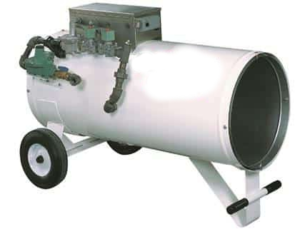Alternative Full Structure Treatments for Drywood Termites
Few people want to tent their home. It’s a huge hassle: you have to move out for at least two nights, double bag all your food, let strangers into your house, and deal with the stigma of having a tent over your home. Then there’s the concern of filling your living space with a deadly gas. And what about the environmental impact?
Some homeowners simply can’t fumigate. Perhaps their home is connected to a neighbor’s who doesn’t want or need to tent, or they have an elderly family member who can’t be relocated. Others might have fragile roofs or other structural issues that make tenting impractical.
What Are the Alternatives?
Spot Treatments with a Fipronil Product Combined with Preventative Borate Applications
This treatment can be highly effective. However, this method is most successful when termites are located in accessible areas. In some cases, termite activity may extend into hard-to-reach sections of attics and crawlspaces, or within the wood framing of walls and ceilings, where inspection and treatment are challenging.
Whole House Heat Treatment
If you’re avoiding tenting due to its hassle, heat treatment might be an even bigger inconvenience. Heat treatment requires moving every heat-sensitive item out of your entire home. Unlike tenting, it’s difficult to ensure the heat reaches all termites. This method typically costs more than other alternatives and may lack consistent effectiveness.
 Attic and Crawlspace Heat Treatments
Attic and Crawlspace Heat Treatments
For significant termite activity in attics or crawlspaces, heat treatment is the most comprehensive option short of tenting. It involves raising the core temperature of wood members to 130°F for at least 30 minutes. A propane heater stationed outside pumps heated air through ducts into the attic or crawlspace. However, issues include:
- Long duct work reducing air temperature.
- Hard-to-reach areas shielded by insulation or plywood.
- Well-ventilated spaces allowing heat to escape.
- Fire sprinkler systems that must be drained before treatment.
This process requires specialized equipment and is among the most expensive treatment options. While it can be effective, it’s usually recommended only for those who can’t fumigate.
Electro-Gun
This low-voltage electric treatment targets termites directly. The theory is that since termites are mostly water, the electricity will travel through the wood to kill them. However, its effectiveness is often undermined by improper application. For it to work, technicians must drill holes into termite-infested wood and insert metal rods to direct the electricity. Without these steps, the Electro-Gun is largely ineffective. This method is best reserved for very specific situations, such as termite activity in thin paneled wood ceilings, and even then, results can be inconsistent.
Orange Oil
Orange oil appeals to those with allergies or sensitivities to chemicals. It’s a spot treatment, meaning the infested areas must be accessible. Unlike Fipronil, which can spread through termite colonies, orange oil is a repellent that termites avoid. For it to be effective, termites must come into direct contact with the substance. Since orange oil is biodegradable, it provides no long-term protection. It often requires more access to infested areas than standard chemical treatments, making it less versatile.
Other Methods
- Trained Dogs, Microwaves, and Video Scopes: These methods are rarely, if ever, used by termite control companies.
The Verdict on Alternatives to Fumigation
Fumigation remains the number one recommendation of the California Structural Pest Control Board, which regulates the pest control industry. According to them, alternative methods are considered substandard. Many companies offering alternatives include disclaimers in their contracts that place responsibility on the homeowner for choosing these methods.
That said, alternative treatments can still be effective if applied correctly. Based on personal experience, homes treated with alternatives often show little to no recurrence of termite activity when paired with proper maintenance and annual inspections. If you choose an alternative treatment, to keep termites in check, it’s crucial to maintain a full-structure warranty, which includes regular inspections by a licensed termite inspector.
